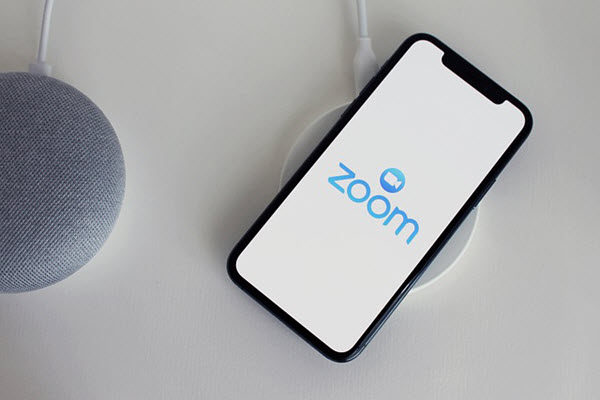The Emergence of Telehealth in Wound Care
By Brian Wallace
January 10, 2024 • Fact checked by Dumb Little Man

The healthcare industry is forever evolving. With the intention of delivering health services and information across both short and long distances, many sectors have begun offering remote services. This practice is known as telehealth. With credit to the Wound Care industry, patients have been able to receive help in treating their cuts, gashes, and lesions through virtual means. Below, we will dissect both the wound care and telehealth industries, as well as explain how they've joined forces.
The Importance of Wound Care
Wound Care offers solutions to patients having undergone injuries or surgeries resulting in skin ulcers, pressure sores, gashes, and similar cuts. Treatment of these injuries is crucial in igniting the healing process. Commonly, caretakers use wound dressings, antibiotics, antiseptics, and enzymes to prevent the patient's open wound from becoming infected.
However, things can get far worse for patients who do not seek oversight from a wound care specialist. For example, visits to already overcrowded emergency rooms and hospitals and infections may lead to avoidable amputations and death. And those who have underlying medical conditions, such as diabetes, cancer, and others can experience more difficulty when it comes to healing even the most minor wounds.
Those Who Benefit From Wound Care The Most

The bulk of patients with wounds desperate for specialized care are also the most vulnerable to serious complications. Saying this, the patient demographics needing specialized wound care the most include people:
- in recovery from recent surgeries,
- with chronic lung disease or asthma,
- undergoing dialysis,
- with diabetes,
- with circulation problems,
- in nursing or post-acute residencies,
- aged 65+,
- with serious heart conditions,
- who are immunocompromised,
- with mobility issues, and
- who are extremely obese (BMI 40+).
Still, obstacles continue to rise in reaching those who fall into the above-named demographics – with primary reasons rooting to socioeconomic factors.
The Expense of Wound Care
The cost of wound care adds to its complexity. It seems the most crucial health services are often fiscally unobtainable for the ones they will benefit most. American Medicare approximates the fare of acute and chronic wound treatment to range from $28.1B and $91.8 billion each year.
Taking a closer look, surgical wounds cost up to $13 billion annually, and diabetic foot ulcers up to $6.9B. Of course, that's only a portion of the greater pool of expenses. Chronic, incurable wounds impact nearly 15% of Medicare beneficiaries each year – summating to 8.2 million American seniors. Take note of the previously mentioned demographics when soaking in this data.
Each patient can expect a $3,000-$4,000 bill per wound treatment. However, treating the most expensive wounds can cost nearly $10,000 per incident.
How Telehealth Helps
By expanding wound care into telehealth, patients are ensured immediate assistance to their problems. On top of this, telehealth provides patients the opportunity to minimize their risk of spreading their wound-caused infections to other patients and their providers.
Telehealth also provides elderly patients with brighter solutions. 8.1 million Americans will go on to need some form of long-term care in their lives. This is noteworthy as a huge percentage of elderly patients suffer from wounds while undergoing nursing home care. Here's who is impacted by this:
- up to 36% (1.6 million people) of home health patients,
- up to 35% (500,000 people) of hospice patients,
- up to 35% (300,000 people) of skilled nursing patients, and
- up to 27% (219,000 people) of long-term acute care patients.
Even further, up to 2.5 million Americans in senior care facilities may require chronic wound care as we speak.
See Also: Saving Post-Acute Care For Future Generations
The Specialized Digital Platforms Telehealth Requires

Right now HIPAA rules are being relaxed, and healthcare providers are able to use the following platforms for patient communications:
- FaceTime
- Messenger
- Google Hangouts
- Skype
- Zoom
- GoToMeeting
- Webex
These are not HIPAA compliant, however. Telemedicine platforms are built specifically to be HIPAA compliant. However, videoconferencing will not always work for wound care telehealth – even the platforms specifically built for healthcare needs. Wound care requires accurate imaging to properly identify the type and condition of injury. Taking this into account, standard definition video or photos are not powerful enough to do the job.
For example, a provider needs high-definition software so they can analyze the patient's tissue color to help determine the health of their skin. Furthermore, software must be powerful enough for the provider to take wound measurements, as these are critical in accurately assessing the wound for proper treatments. A misdiagnosis due to software can cause the patient to continue suffering, or go on to worsen their condition.
Wound Care Is Essential
Overall, telewound can provide significant long-term benefits. This approach to healthcare is more cost-effective for wound care providers. It is also time-saving and convenient for the patient – improving their satisfaction. Moreover, it helps with selection, authorizing, and education on new products.
Telewound can also provide healthcare professionals to track wound healing with electronic databases through means of image capturing and storing the patients' wound history.
When technology and people merge, wound care can become a far better experience for the patient. With telewound, we can solve the wound care challenge.
Brian Wallace
Brian Wallace is the Founder and President of NowSourcing, an industry leading infographic design agency based in Louisville, KY and Cincinnati, OH which works with companies that range from startups to Fortune 500s. Brian also runs #LinkedInLocal events nationwide, and hosts the Next Action Podcast. Brian has been named a Google Small Business Advisor for 2016-present and joined the SXSW Advisory Board in 2019.

